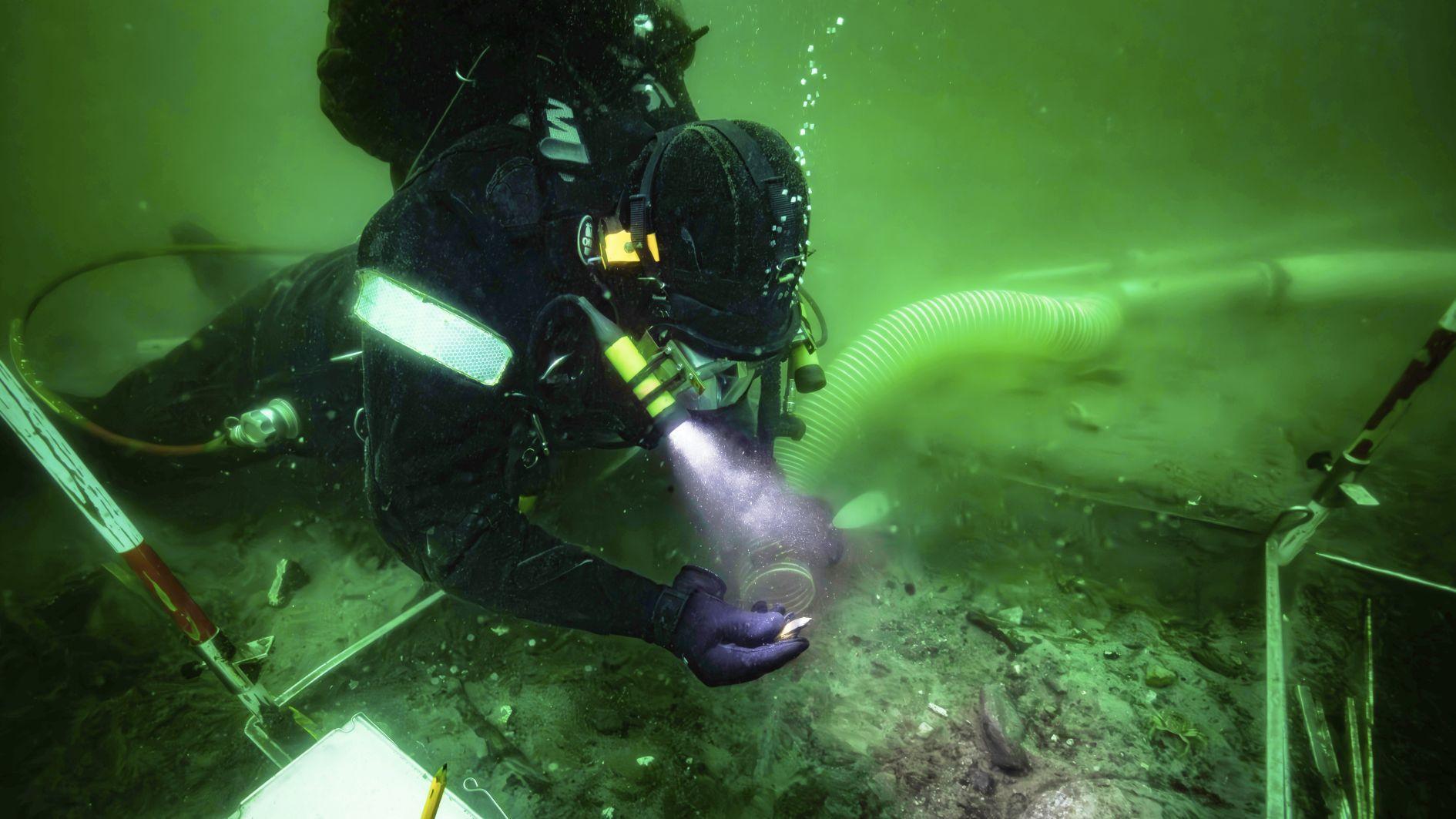
Below the dark blue waters of the Bay of Aarhus in northern Denmark, archaeologists search for coastal settlements swallowed by rising sea levels more than 8,500 years ago.
This summer, divers descended about 8 meters below the waves close to Aarhus, Denmark's second-biggest city, and collected evidence of a Stone Age settlement from the seabed.
It's part of a 13.2 million euro ($15.5 million) six-year international project to map parts of the seabed in the Baltic and North Seas, funded by the European Union, that includes researchers in Aarhus as well as from the U.K.'s University of Bradford and the Lower Saxony Institute for Historical Coastal Research in Germany.
The goal is to explore sunken Northern European landscapes and uncover lost Mesolithic settlements as offshore wind farms and other sea infrastructure expand.
Most evidence of such settlements so far has been found at locations inland from the Stone Age coast, said underwater archaeologist Peter Moe Astrup, who’s leading underwater excavations in Denmark.
“Here, we actually have an old coastline. We have a settlement that was positioned directly at the coastline,” he said. “What we actually try to find out here is how was life at a coastal settlement.”
After the last ice age, huge ice sheets melted and global sea levels rose, submerging Stone Age settlements and forcing the hunter-gatherer human population inland.
About 8,500 years ago, sea levels rose by about 2 meters per century, Moe Astrup said.
Moe Astrup and colleagues at the Moesgaard Museum in Højbjerg, just outside Aarhus, have excavated an area of about 40 square meters at the small settlement they discovered just off today's coast.
Rising sea levels preserved history “like a time capsule”
Early dives uncovered animal bones, stones tools, arrowheads, a seal tooth, and a small piece of worked wood, likely a simple tool. The researchers are combing the site meter by meter using a kind of underwater vacuum cleaner to collect material for future analysis.
They hope further excavations will find harpoons, fish hooks or traces of fishing structures.